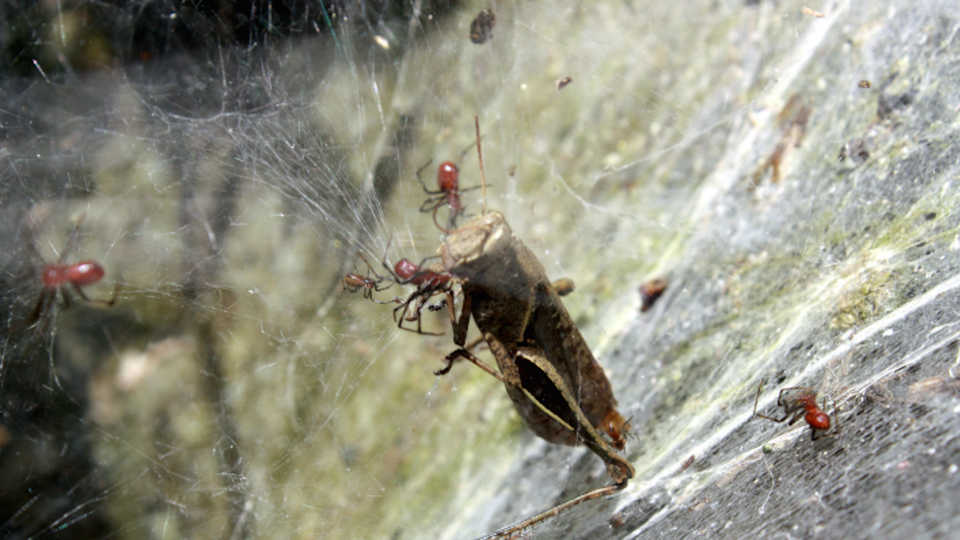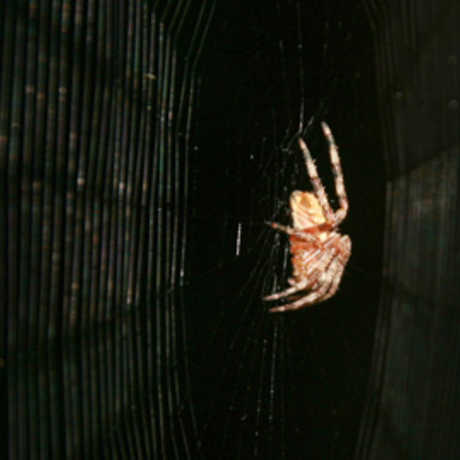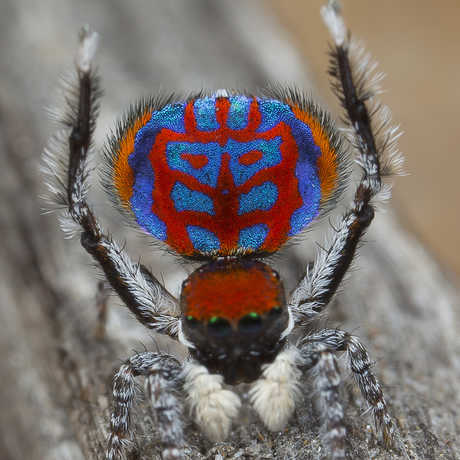Science News
Spider Sharing

You know how your mom always told you that it is good to share with others? Well, in the social spider species Anelosimus eximius, sharing is not always caring. These tropical spiders live in colonies whose populations can contain tens of thousands of individuals, nesting together on one large web and working communally to catch prey such as bees, butterflies, and other insects. These spiders are generally inclined to divide prey among colony members, however, especially in larger colonies, this kind of sharing can lead to the entire colony collapsing. A new study has determined that the survival of each colony depends on the number of spiders in the colony and the size of prey caught.
For these spiders, size really does matter. If an insect is too large for an individual spider to eat by itself, it will divide it evenly among other colony members. But if the insect catch is small, the spider will take it for itself. Scientists from the University of British Columbia (UBC) categorize these two different types of competition for resources as contest competition and scramble competition. In contest competition, an individual monopolizes the prey for itself; in scramble competition, the prey is evenly divided. While scramble competition would appear to benefit the most within a colony, scientists have found that in some cases, there will not be enough prey to feed the entire colony, so when the group tries to divide it up, each member only gets a very small portion of food and this sharing puts the whole colony at risk of starvation. According to UBC’s Leticia Avilés, 21 percent of Anelosimus eximius colonies die off every generation. That’s a lot of spiders!
But size of insect prey isn’t the only factor in a colony’s success. The scientists observed that smaller colonies—of one thousand or so individuals—are more likely to survive, creating more contest competition to take place and allowing individuals to survive and reproduce. In contrast, scramble competition is more likely in larger colonies, where resources may become scarce.
“We did this research to figure out why large, well-established colonies were going extinct so swiftly,” says lead author Ruth Sharpe. “Once I saw a massive nest on the side of the road in Ecuador, about five meters (16 feet) tall and four meters (13 feet) across. I went back a few weeks later and it was completely gone.”
So sharing isn’t always best. Feel free to share this story with your mom!
Image: UBC


